Test Configuration
For this test we used a low power machine that is a favorite configuration of these types of servers:
- Motherboard/ Processor: ASRock C2750D4I with onboard Intel Atom C2750
- RAM: 16GB of Kingston ECC DDR3 UDIMMs (4x 4GB)
- Chassis: Silverstone DS380
- Disks: 2x WD Red 4TB
- Cache Drives: Samsung 840 Pro 256GB, OCZ Vertex 4 256GB
- USB Drive: SanDisk Cruzer Fit 16GB
- Extra NIC: Mellanox ConnectX-2 EN 10GbE single port (more on this later)
The USB drive was significantly too large for this project, but we had it on hand so it was used. Likewise with the cache drives. They are not part of the 20-30TB of disks on the lab’s shelf. The great part is that this server was put together using spare parts in the lab.
NAS4Free installation
The first step is to either download the LiveCD from the NAS4Free site/ sourceforge. We were able to mount using the ASRock IPMI interface and so there was no burning of a CD, making a bootable USB. Just select the image once downloaded and let it run.
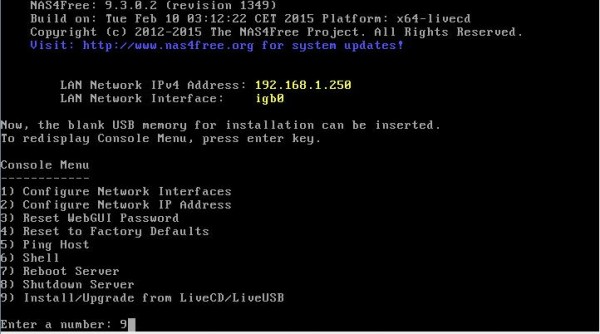
nas4free install 1 – boot from CD
At this point, you will want to select option 9.to install from the LiveCD.
Once this is done, one will go to the Install & Upgrade Options Menu. It is recommended that you use a USB drive to install the OS since it does not take up a valuable SATA/ SAS port.
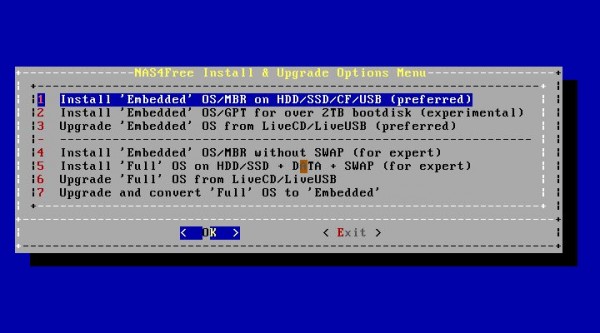
nas4free install 2 – embedded
If you do use a USB stick, a tip is to use the Embedded installation. This install method limits the writes done to the USB stick, and therefore does not wear out the USB sitck’s NAND which tends to be of lower quality. The installer is good, so let it work.
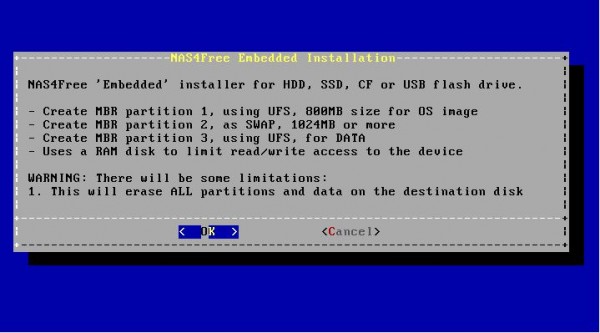
nas4free install 3 – embedded partitions
As one can see, we are using the virtual CDROM that is part of the KVM over IP solution provided by ASRock for this guide.
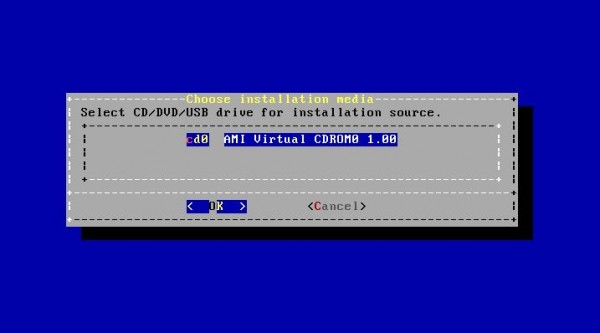
nas4free install 4 – select installation source
Now it is time to install to choose the installation media. Here, you want to use the USB drive which one can see is our SanDisk drive. Again, 16GB is too big for this type of application, but it is what we had on hand.
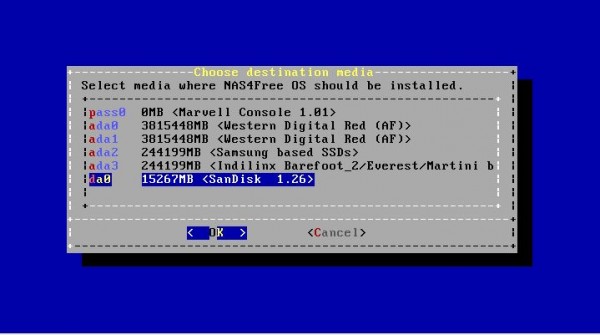
nas4free install 5 – select USB drive
After that screen, click OK and wait for the installer to prompt you to restart. Remove the installation media and reboot the system.

nas4free install 6 – boot from USB
One will see that the OS is installed and booting from the USB stick.
After a few more seconds, the console will display the default IP address.
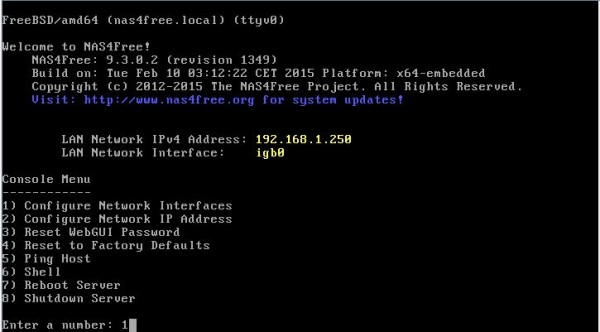
nas4free install 7 – boot with ip address
From here, one can go to the web interface and begin configuring NAS4free.
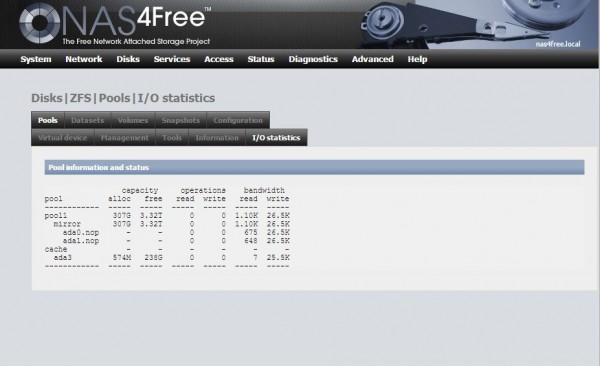
nas4free web interface
The default login information is:
- username: admin
- password: nas4free
And the web interface is fairly mature so most tasks can be completed easily using a browser post-installation.
Conclusion
Overall the process should take you about 5 minutes. It is certainly one of the more straightforward NAS software installations out there today. There are many users turned off by command line installers. NAS4Free is one of the more straightforward installations since one can use the default values for most of the prompts. Hopefully this short article will demonstrate that the installation is extremely simple to accomplish.
Tidak ada komentar:
Posting Komentar